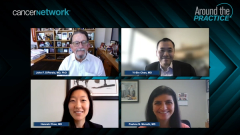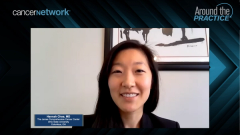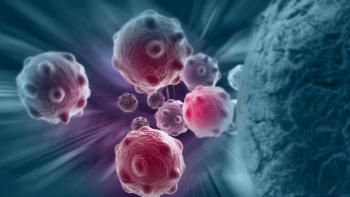
Additional Approaches for Steroid-Refractory Chronic GVHD
Expert panelists comment on additional treatment options for significant steroid-refractory chronic GVHD following initial therapeutic intervention, including rechallenging with prophylactic agents or initiating B-cell therapy.
Episodes in this series

Transcript:
John F. DiPersio, MD, PhD: There are a bunch of other drugs out there, and I wonder who considers going back to using standard GVHD [graft-vs-host disease] prophylaxis-type drugs, like FK-506 [tacrolimus], cyclosporine, methotrexate, and sirolimus? Do those things work in this setting? How many of you throw in the towel and say, “I’ve got to put somebody back on FK-506, cyclosporine, or sirolimus”? Is there any sense that these things make a substantial difference in the outcome of patients with significant chronic GVHD?
Yi-Bin Chen, MD: I tend not to add back prophylaxis, specifically calcineurin inhibitor–based prophylaxis, when we start treating for chronic graft-vs-host disease. Some providers still do, and I can understand the rationale. I just haven’t found that to be super efficacious, and it adds a good amount of toxicity from an immune suppression point of view. There’s still a role. There are patients who progress beyond all the available therapies even with the recent approvals. As I said before, we can’t predict who’s going to respond to what, so there are patients who do respond to adding sirolimus or mycophenolate. Granted, the chance of them responding is not as high, I don’t think, as it is with the newer agents, such as ruxolitinib or even belumosudil. But we can’t predict that. I’d use the newer agents first, but we have these options to fall back on if we need them. They remain there, but we tend not to get to them because we’re using the newer agents.
John DiPersio, MD, PhD: What about some of these B-cell therapies: ibrutinib, low-dose IL-2 for enhancing T-reg [regulatory T cell] production, and rituximab? Is anybody considering these in patients anymore? Or are these fourth-line therapies?
Pashna N. Munshi, MD: I’m so concerned about the infection risk in targeting both B cells and making them hypogammaglobulinemia as well as the T-cell pathways. But I’m sure there’s a role. Of course, there is 1 with rituximab and IL-2. I haven’t seen that used. Even as a fellow, I haven’t had experience using that. I would ask you what you think IL-2 therapies do to our patients in this era of approvals. But I haven’t had to use or not challenge chronic GVHD with Rituxan and B-cell therapies of late.
John DiPersio, MD, PhD: Does everybody agree with that? I agree with that as well. There’s no good evidence that these things work at this point.
Yi-Bin Chen, MD: I’ve found ibrutinib a bit difficult to use. The data in terms of the papers published and the real-world experience back that up. It gets back to what you said, John, in terms of the single-armed small sample trials. There’s a huge bias in a disease, and the response is very subjective in judging. The real-world experience suggests the efficacy isn’t all that significant, and there’s a good amount of toxicity from using ibrutinib. Not just the B-cell depleting and the hypogammaglobulinemia, but toxicity in general: cardiac, GI [gastrointestinal] muscle cramps, and so forth. We participated in the low-dose IL-2 trials. As John said, those were designed to enhance T-reg expansion and reconstitution. There was some efficacy, but there’s a lack of access to get it. Then, there are the logistics of it, which is daily or twice-daily injections in the skin. I have patients who ran out of places to inject in terms of waiting for a response. Right now, it’s not a truly feasible option for therapy.
Transcript edited for clarity.
Newsletter
Stay up to date on recent advances in the multidisciplinary approach to cancer.






















































































